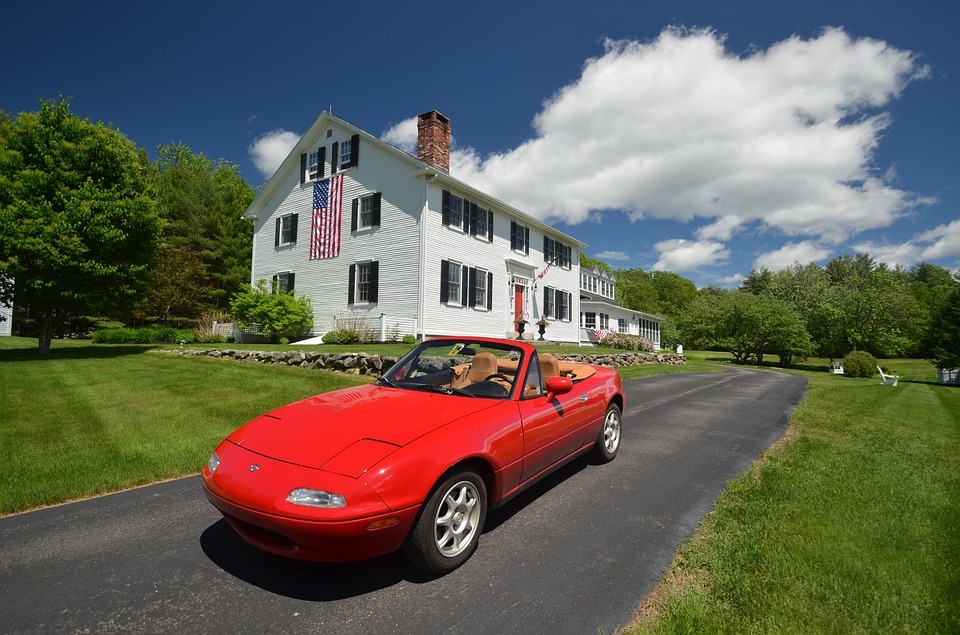Two years ago, the Mazda’s MX-5 Miata celebrated three decades of bringing top-down joy to drivers everywhere.
It’s a seemingly simple concept: bring an affordable, 2-seat convertible to the masses. Of course, it worked and made Mazda history. The Miata MX-5 is the best-selling sports car of all time, and if you don’t have one, you probably want one.
But how did the Miata come about? Its humble beginnings may surprise you, and its innovative redesigns may inspire.
In the following article, we’ll take a look at the legacy of the Mazda Miata and what makes it still one of the world’s most popular roadsters 30 years out.
A Napkin Makes Mazda History
According to the car company, today’s Miata started as a sketch presented to former-head of R&D Kenichi Yamamoto by journalist Bob Hall in the 70s.
It would take a decade of wrangling to get the car into production and almost another before the affordable roadster made its debut at the Chicago Auto Show in 1989.
Its iconic, retractable headlights amplified the sleek look of this 115 hp machine. (Sadly, they were phased out due to new pedestrian safety laws in the late 90s but these parts can still be had.)
The first Miata featured a 1.6-liter engine and maxed out at 116 mph. It also bragged 0 to 60min 8.6 seconds. Maybe that won’t blow anyone’s skirt up these days, but back in the 1990s, that was outstanding — especially for the price. The base for the original Miata was a mere $13,800. And people were interested with 23,052 units coming off the showroom floor its first year on the market.
The First Redesign
By the end of the 90s, the Miata was ready for a redesign. Those headlights went, but the car received a boost in power. Now with a 1.8-liter engine, you saw the NB Miata generate 140 horsepower. A little heavier at 2,350 pounds, the car still did 0-60 in 8 seconds.
But one of the best elements of the redesign was in its seating area. The 1999 Miata featured a defogger, rear glass, and a wind deflector to keep traveling with the top down much more manageable.
The NC Takes the Stage
With a five-speed, manual transmission and 170 horsepower under the hood, the NC was a step up in the Miata evolution. In 2006, the company tried to drop the Miata name and just refer to the roadster as the MX-5 (No one ever did, though).
You could upgrade to an even sportier six-speed transmission to accompany the NC’s 2.0-liter engine. New safety features and all this engine increased the weight of the MX-5 to 2,400 pounds. Another new feature? Drivers could opt for a retractable hardtop adding to its top-down ease.
More changes came in 2009 and 2012 for this version of the Miata. The grill, headlights, and taillights were redesigned in 2009. In 2012, traction and stability controls were added.
The longer front end, new bumpers, side skirts, and taillights all popped up in 2016.
The Miata also enjoyed several engine improvements through these years, with the 2019 version topping out at 0 to 60 in 5.7 seconds and a 7,500 redline.
Today’s Miata
The 30th anniversary MX-5 is noticeable for its racing orange color and special details. A limited-edition version with special effects and details was released to coincide with the milestone.
With added cameras and some engine refinements, today’s version is more remarkable for not bucking Mazda history. It still emphasizes fun and affordability — two things that should keep the Miata at the forefront of sports car popularity for years to come.
Did you find this article informative? You can search this website for more on Mazdas and roadsters.

